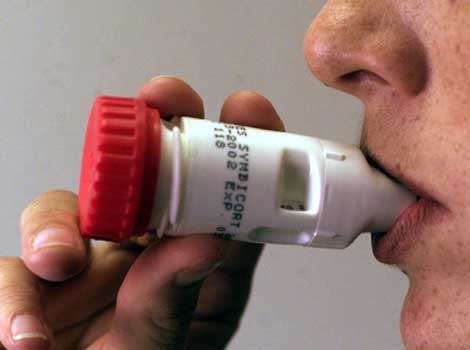Asthma, a chronic lung ailment, has emerged as one of the most common chronic illnesses a child can suffer. Every parent with a child suffering from the ailment must become familiar with asthma attacks. When something triggers the child’s asthma, you must know how to respond to stop the child from having difficulty in breathing or experiencing chest pain and other symptoms of the illness. Create a comprehensive treatment plan to keep it under control and help lessen its effects.
1. Learn about the illness. The child must also learn about the illness so he can inform you if he experiences asthma symptom such as tightness in his chest or shortness of breath so he can allow you to take the necessary action.
2. Get an action plan from a pediatrician on how to prevent asthma attacks. Your medical professional can provide detailed precautionary and emergency procedures during the attacks. Allow all people in your household access to these procedures so they will have an idea of what to do in the event of an asthma emergency. The pediatrician can also provide information to the child on how and when she should use her inhaler or when to stop playing.
3. Learn and teach the child what triggers his asthma. The most common asthma triggers include dust mites, pollen, animal dander and exercise. Take the necessary action, which can include getting rid of pets or replacing carpeting with wooden floors in order to minimize asthma triggers.

4. Ensure the child takes her medication as prescribed by a doctor. Follow the directions provided to keep the asthma under control. Ensure you keep your child’s doctor appointments. The doctor will soon have to evaluate your child’s condition to see if he can reduce the need for medication or if the child can manage her asthma with awareness and lifestyle changes.
5. Keep the child hydrated. Drinking water can prevent the lungs from becoming dehydrated, which can cause the lungs to tighten up, resulting in inflammation and making asthma worse.
6. Monitor the child’s diet. Ensure the child has a balanced meal every day consisting of fruits and vegetables. Research other foods that can prevent asthma attacks. Fish is rich Omega-3s and B vitamins, which have shown the ability to reduce the chances of an asthma attack. You also will have to control the amount of salt the child intakes, which can worsen asthma symptoms.
7. Allow children to exercise. Although strenuous physical activity can trigger an asthma attack, the child still needs to exercise his lungs. Participating in extracurricular activities can help improve not just his lungs but also his entire body to help lessen the effects of asthma. Just ensure the child knows when to stop and use the inhaler.
Further Readings: